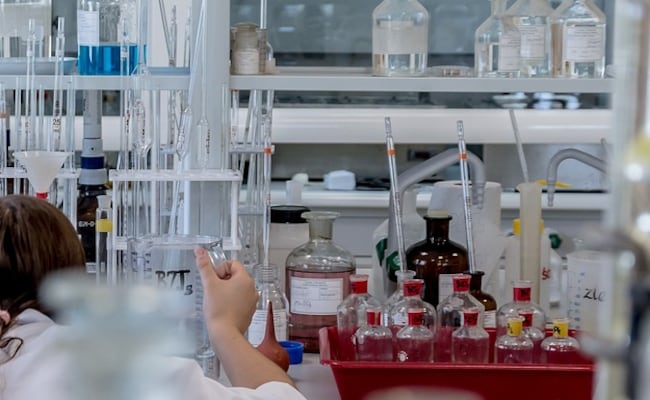<!–

The journal said India’s share of R&D spending had peaked at 0.82% of GDP.
Pointing to India’s achievements in the pharmaceutical arena as well as its historic Chandrayaan mission, the British scientific journal Nature has said that along with being an economic power, India is “more than ready to take the next step towards becoming a science powerhouse”.
In an editorial titled ‘How India can become a science powerhouse’, the journal has said that the country is among the most prolific countries in terms of research output and has also listed out steps – especially bridging a gap in funding – that can help India achieve that goal.
Beginning the editorial with a reference to the Lok Sabha elections, which began on Friday, the editorial said the winner will take charge of the world’s fifth-largest economy, which is predicted to become the third-largest by 2030.
“Along with being an economic power, India is also more than ready to take the next step towards becoming a science powerhouse. This is not yet a given, but it can happen. Researchers told Nature’s news team that basic research has been neglected by successive governments, and that a thriving research system needs much greater autonomy,” the editorial, published on Tuesday, said.
Urging the Indian government to bridge the funding gap, the journal said one way to do this is by encouraging businesses to contribute more, like is done in other leading economies.
“If policymakers and industrialists can get this right, an opportunity to put rocket boosters under the country’s impressive scientific achievements is there for the taking,” the journal said.
“There is, indeed, much to build on. According to government data, in 2021-22, India had the world’s third-largest pharmaceutical industry by volume and was the leading supplier of affordable medicines and generic drugs, some of which were crucial to fighting the COVID-19 pandemic worldwide. Last year, India became the fourth country ever to achieve a soft Moon landing and the first to land near the lunar south pole. It also has the world’s largest constellation of remote-sensing satellites,” it emphasised.
Spending As Percentage Of GDP
Pointing out that India is only behind the US and China in terms of research output, it said the number of universities went up to 1,113 from 760 between 2014 and 2021. Seven more IITs have also been established, taking the total to 23, as well as two new Indian Institutes of Science Education and Research, it said.
The journal highlighted that India did all this even though it spent only 0.64% of its GDP on research and development (R&D) in 2020-21, compared to 2.4% for China. It also said that the average R&D spend for 38 high-income countries in the Organisation for Economic Co-operation and Development (OECD) was roughly 2.7%
“After economic reforms were introduced in 1991, India’s share of R&D spending rose steadily, peaking in 2009-10 at 0.82% of GDP before declining to its present levels, according to Department of Science and Technology data,” it said.
Private Push
Drawing a comparison between the country and economies of a similar size, the editorial said that among OECD nations, on average, 74% of R&D spending comes from the private sector and the figure – which is 66% for European Union nations – is only 40% for India.
“India today has many global companies in construction, information technology, manufacturing, pharmaceuticals and more. They could be contributing a lot more to the nation’s research – both in terms of funding researchers and also infrastructure,” it said.
The journal said the Parliament approved legislation in August 2023 establishing the Anusandhan National Research Foundation, which will distribute Rs 50,000 crore to universities and laboratories over 5 years, with 70% of the funds coming from non-governmental sources. It said, however, that more needs to be done to encourage India’s corporations to be “more generous”.
